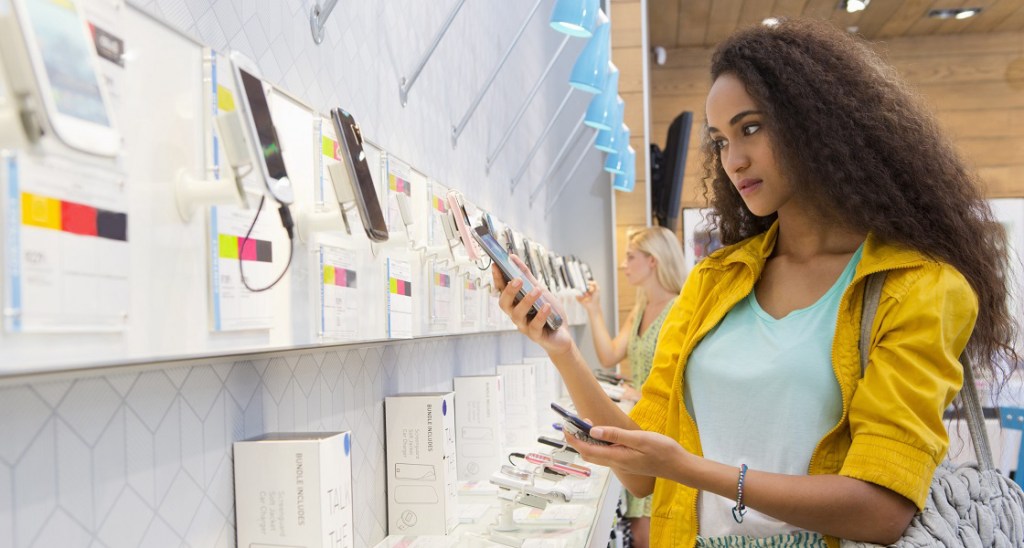Looking to stop deceleration in the consumer technology & durables sector? As both value and volume growth decelerate in many global markets, premiumization could help brands to protect their bottom line.
2020 kicked off 18 months of unprecedented value and volume growth in the consumer technology and durables sector. However, this growth peaked in 2021 and by the second half of last year was already approaching a plateau. Despite an overall value increase of 12.2% globally, the year saw a marked slowdown, with revenues growing 30% in Q1 and tumbling to a 1% decline by Q4. Our GfK experts foresee that that challenging period of deceleration will continue throughout 2022, with forecast value growth of just 2%. Compare this with how the Consumer Technology and Durables market was shaped in 2021.
Decelerating demand and disruption are fuelling a sector slowdown
As Covid-19 restrictions have eased, so too has consumer demand for those devices that shaped their lockdown lifestyles. As early as July 2021, we saw out-of-home work and leisure habits gain time back in consumer routines, driving a decrease in demand for technology and durables, compounded by advance purchases made during the pandemic.
At the same time a perfect storm of challenges is putting pressure on global supply chains and driving up costs. These include ongoing disruption in energy, food and commodity markets, production bottlenecks and shortages of key goods for the industry, such as semiconductor chips. All adding to growing inflationary pressures.
Against this challenging backdrop though, we’re seeing one key way for consumer technology and durables to outpace deceleration: premiumization.
Globally, premium brands are outperforming the wider market
Not only do they now occupy a 24% overall value share, but they also achieved year-on-year sales growth of 32% in 2021, well ahead of both standard and entry-level brands.
Of course, premiumization won’t be a strategy available to all brands or retailers. In carving out a more premium positioning in the market, members of the C-suite need to carefully consider their current product portfolio and target demographic. But for those for which it is a viable option, by leveraging a willingness among consumers to spend more, there’s a clear opportunity to be seized, despite the current slowdown.
So, what exactly is it that constitutes a premium brand in today’s marketplace?
Here are five key elements that business decision makers should consider.
1. Prioritize bold brand identities
It takes far more than impressive functions or features on a device to signal a premium product. A clear and compelling brand identity should also be a core part of any strategy, building in a consistent approach to visuals, values and messaging along with a defined brand ethos that is communicated to consumers.
What is brand identity?
Why is brand identity important and how can I create it?
Why do consumers buy luxury brands?
2. Zero in on green credentials
Some 77% of consumers say it’s important that companies take environmentally responsible actions – and they’re willing to pay extra to those that go the extra mile. But though there are efforts behind the scenes in consumer technology and durables, as yet the sector lacks a clear champion on sustainability. To the first mover then, will go all the spoils – including using eco-credentials to cement a more premium price point.
3. Build in multifunctionality
Devices that deliver multiple functions are a key area of growth in consumer technology and durables. Mini ovens are the perfect example. Once a low-tier device, the release of versions with either integrated hot-air frying or humidifying steam has seen these sub-categories achieve respective sales growth of 534% and over 1,000%. Exploring this type of multifunctionality is a great way for brands to elevate their products to a more premium tier, by adding value through greater convenience and leaning into consumer trends such as the heightened focus on health.
4. Upgrade with distinctive features
Manufacturers should explore how the addition of distinctive features and functions can nudge consumers to upgrade on existing devices. While sales of vacuum cleaners grew 14% in 2021, for example, robotic vacuum cleaners with docking stations were +207%. In categories with growing instalment bases, such as coffee machines, this opportunity to offer an upgrade can be even greater.
5. Create or tap into a smart ecosystem
Those devices that allow consumers to tap into the possibilities of the Internet of Things (IoT) create an emerging opportunity to premiumize too. In the fast-growing category of wearables in particular, those that connect up to other household devices, be it scales or sports equipment, add brand new dimensions to a product, generating clear value and a willingness to spend more.
Stay ahead of the market with the latest intelligence
Though both brands and retailers in consumer technology and durables face a challenging year ahead, as a slowdown in volume demand is compounded by broader inflationary pressures and disruptions, premiumization creates a compelling avenue for business decision makers to explore.
It won’t be the right strategy for all. But for those with the right portfolio and brand positioning in the market, now is the time to start exploring how investing in your brand premiumization in 2022 could help you outpace the threat of deceleration.
It has never been more important to stay ahead in these volatile times, using platforms such as GfK’s own gfknewron.
To find out more about strategies and solutions that can help you navigate through the current market, read our latest State of Consumer Technology and Durables Report here:
Most of the data in this article has been collected from GfK Market Intelligence, GfK Market Intelligence: Sales Tracking and GfK Consumer Life Global.



